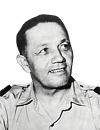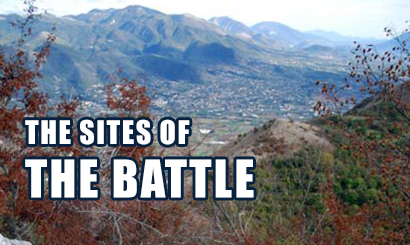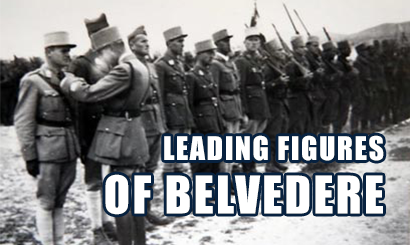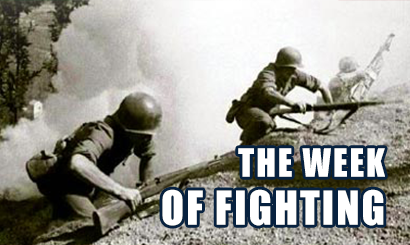 Born on 2 February 1902 in Rochefort-sur-Mer, Paul Gandoet enlisted in the 34th Infantry Regiment in 1920.
Born on 2 February 1902 in Rochefort-sur-Mer, Paul Gandoet enlisted in the 34th Infantry Regiment in 1920.
Promoted to Sergeant, he entered the Infantry and Tank School at Saint-Maixent in 1923. Posted to a rifle regiment on leaving the School, he took part in the Moroccan and Syrian campaigns.
During the early years of the Second World War, he served as a staff officer in Tunis before being appointed commanding officer of the Ecole de Salammbô (Military Academy) in 1942. Promoted to the rank of Major (in the infantry), he took part in the Tunisian campaign from November 1942 to March 1943.
Major Gandoet was at the head of the 3rd battalion of the 4th R.T.T. in 1944 which won renown for its successful assaults on hill 862, the Peak with no Name and hill 915. Although wounded in the hip and the arm by the same shells that killed Lieutenant Jordy, Gandoet survived the fighting at Belvedere. He is probably, as the surviving field officer and key protagonist in the fighting, one of the principal figures in the Battle of Belvedere.
After the Italian campaign, he took command of the 151st Infantry Regiment, the former “Fabien Brigade” which had 3,000 Communist Resistance fighters when it was first set up. With his regiment, he took part in the liberation of Colmar, the crossing of the Rhine, and the capture of Sigmaringen, reaching the Danube on 29 April 1945.
After the Italian campaign, General Gandoet returned to Algeria in 1957. He played an important role there as a negotiator, particularly during the events of 1958 and 1960. In February 1962, unable to bear the fate that awaited his former Riflemen, Harkis [Muslim Algerians serving as auxiliaries with the French Army], or pied-noir [Algerian-born French colonial] friends, he turned down a command in Paris with its “five star” rank, and left the army.
Unwilling to remain idle, in 1965 he co-founded, with General Douceret, the “Epaulette” association for officers promoted from the lower ranks, and remained its President until 1970. The aim of the association is to “strengthen the bonds of comradeship, guard against social risks, increase public awareness of officers recruited in this way, monitor projects and studies concerning their career, and give them moral support”.
A field officer who had had an exceptional military career, all his life Gandoet remained traumatized by the fighting at Belvedere and, in particular, by the death of his second in command, Lieutenant Jordy, whom he continued to praise at commemoration ceremonies, medal presentations and in his private correspondence.
Throughout his life Gandoet maintained extremely close relations with the men who had fought at Belvedere, and also with the families of soldiers who died in Italy. As well as his outstanding military career, it was Gandoet’s energy and empathy with his men that made him stand out from the norm.
One of his former pupils, General Douceret, wrote a biography of him that was published by Devauzelle in 1987. A whole chapter is devoted to the Battle of Belvedere.
Holder of the Grand Cross of the Legion of Honour, the National Order of Merit, and of 21 other decorations, wounded three times in the course of 18 campaigns, General Gandoet passed away on 12 November 1995.



